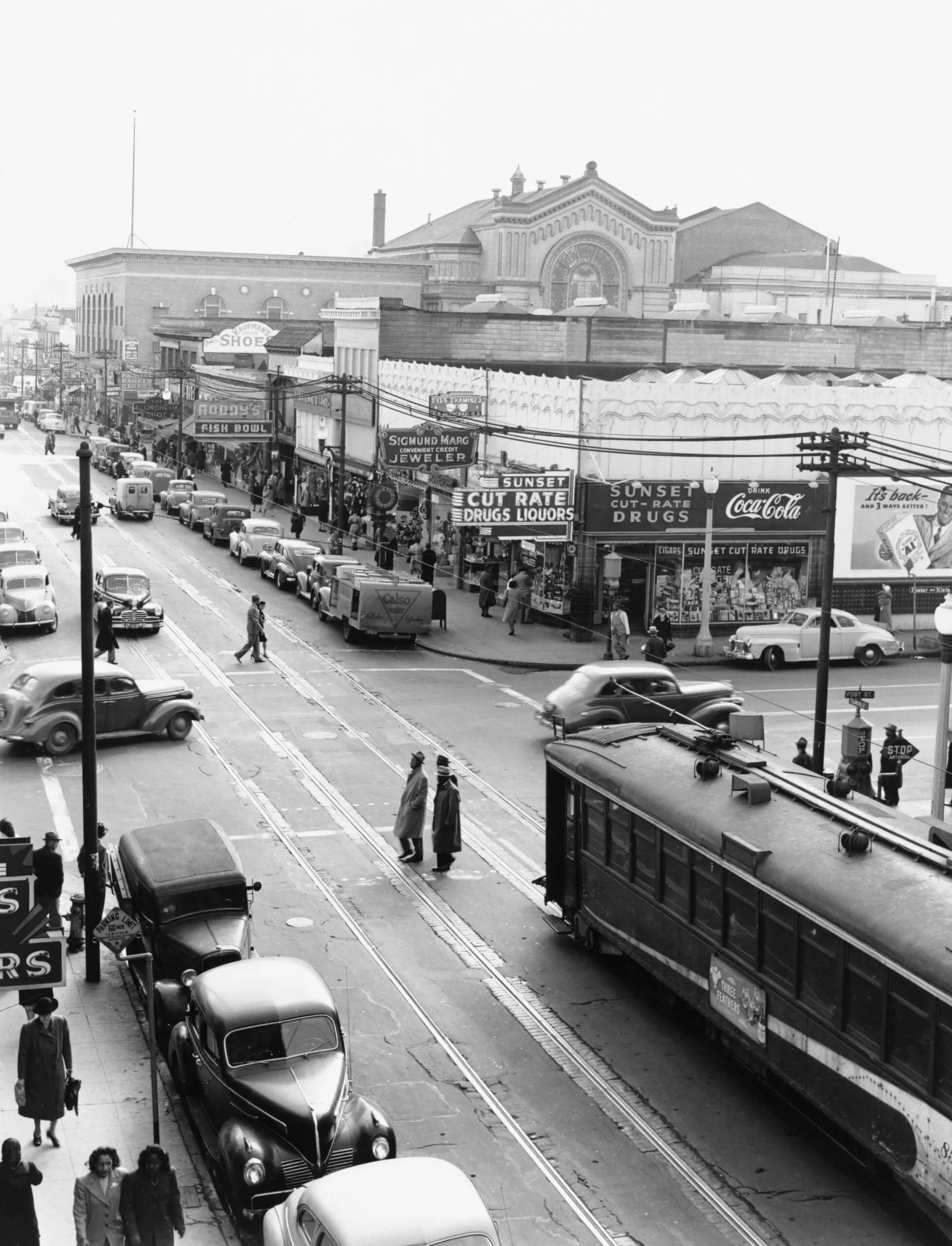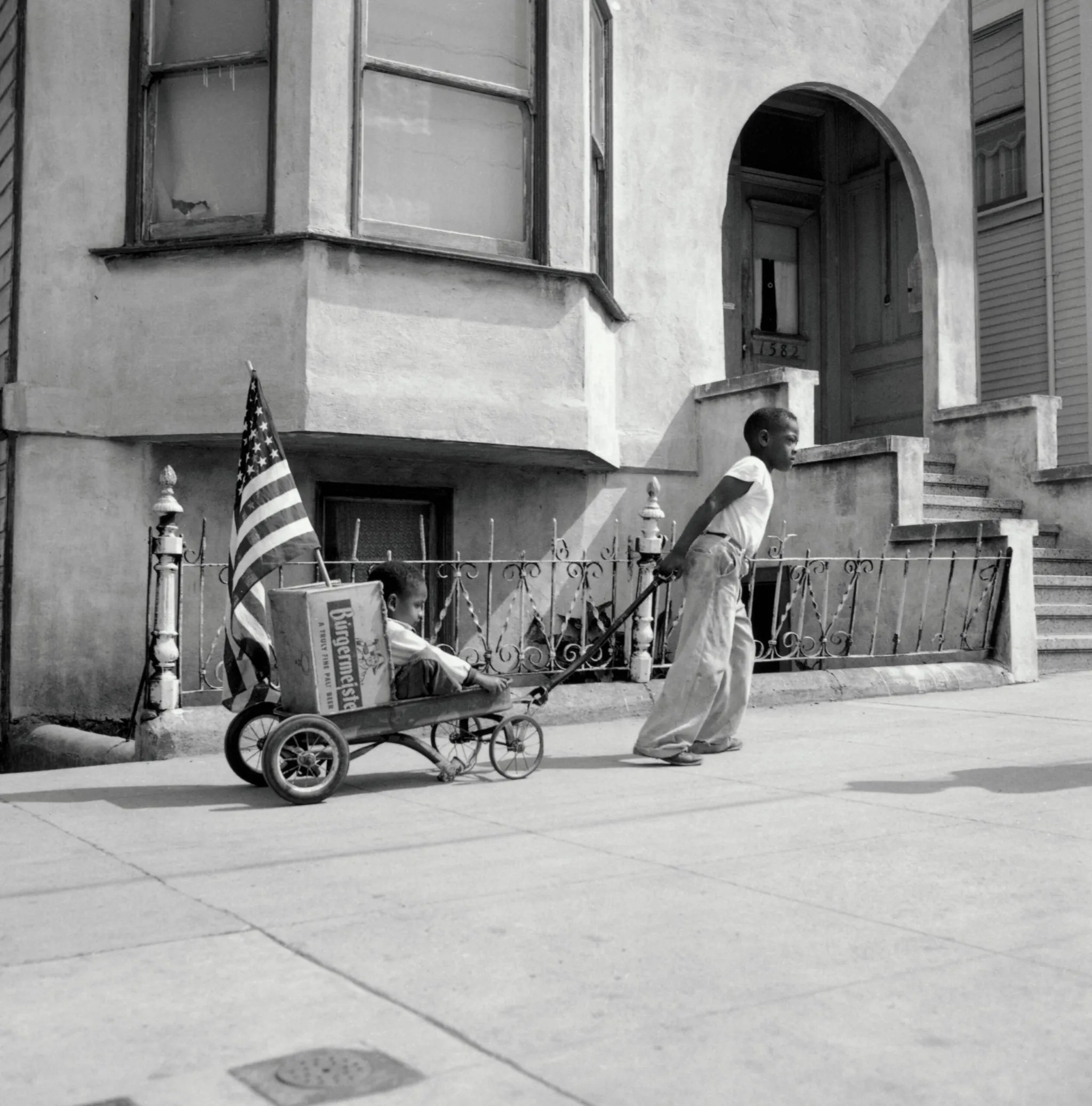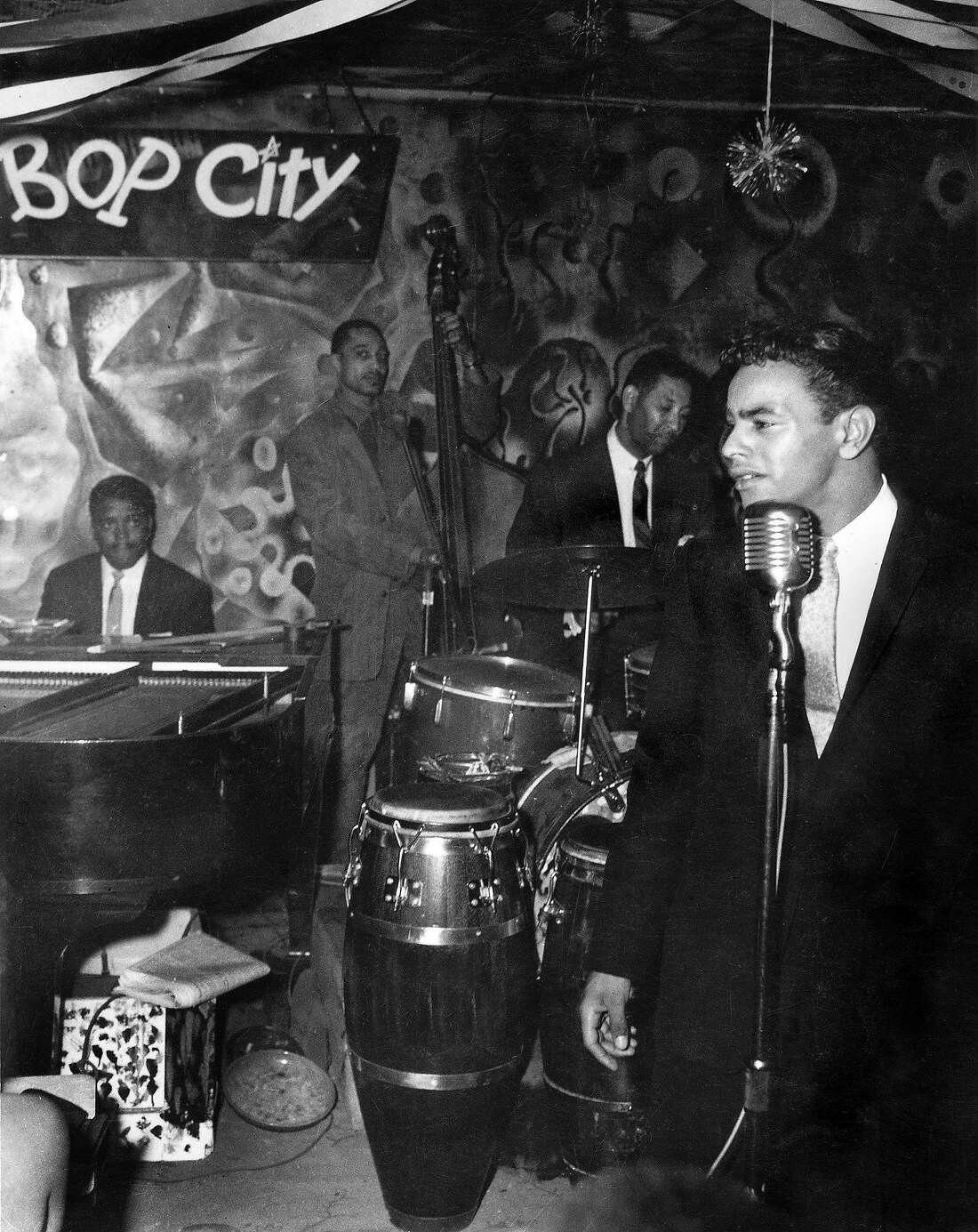New Arrivals in San Francisco
One-Way Ticket West
In the wake of the Japanese American community’s forced removal from the Western Addition, the neighborhood transformed practically overnight. The U.S. was suddenly thrown into war. And war meant a new demand for war-time labor. People from all over the country were soon drawn to the high-paying jobs in San Francisco’s shipyards. In particular, Black Americans, eager to escape the oppressive conditions of the Jim Crow South, began arriving in droves from states like Louisiana, Texas, Arkansas, Oklahoma, and Mississippi.
Racism in employment and labor unions’ near ubiquitous ban on non-white membership had kept San Francisco’s Black population relatively small before the war. Yet because of racial covenants in real estate deeds that restricted where Black people could live and own property, that “small but established” pre-war community had already been living in the Western Addition. When the abundant war-time job opportunities brought thousands of new Black migrants to the city every month, housing was not only scarce but white landlords in other parts of the city weren’t often willing to rent them what was available. That’s when the newly vacated apartments in now-empty Nihonmachi proved to be a lifeline.
In one of the rarer urban transformations in American history, the once-Japanese American community concentrated around Post and Buchanan Streets suddenly became a predominantly Black neighborhood—and a busy one at that. Within months, the homes of the 5,000 incarcerated Japanese were filled by 18,000 Black Americans. To cope with the housing shortage, Black families often doubled or tripled up in apartments. People rented beds for eight hour chunks of time and cooked meals in shifts.
Looking south on Fillmore, 1946, by David Johnson. Courtesy of the David Johnson Photograph Archive, University of California Regents, University of California, Berkeley
Boys and Flags, Hunters Point, 1947 by David Johnson. Courtesy of the David Johnson Photograph Archive, University of California Regents, University of California, Berkeley
Famous writer and “Returning to Harlem'' character Maya Angelou had moved into the neighborhood as a teenager just before the war and witnessed this shift firsthand. In her memoir, “I Know Why the Caged Bird Sings,” she writes:
The Yamamoto Sea Food Market quietly became Sammy’s Shoe Shine Parlor and Smoke Shop. Yashigira’s Hardware metamorphosed into La Salon de Beauté owned by Miss Clorinda Jackson. The Japanese shops which sold products to Nisei customers were taken over by enterprising [Black] businessmen, and in less than a year became permanent homes away from home for the newly arrived Southern blacks. Where the aromas of tempura, raw fish and cha had dominated, the aroma of chitlins, greens and ham hocks now prevailed.”
Maya was struck by the fact that the Japanese seemed to have vanished into thin air:
No member of my family and none of the family friends ever mentioned the absent Japanese…it was as if they had never owned or lived in the houses we inhabited.”
She was keenly aware of the irony, though, as Japanese and Black Americans had both been marginalized by the American mainstream, subjected to racism and violence, discriminated against in housing and employment, and treated as second-class citizens. But the new Black community was earning good cash wages for the first time, and that prosperity brought an exciting, vibrant new culture to life in the neighborhood’s bars and nightclubs…
An American Soundtrack of Joy
Within months, the new neighborhood — now called Fillmore A.K.A. the ‘Mo—was bursting with energy, captured, above all, in the music that poured out onto the streets from Fillmore’s new venues: jazz.
The Black music scene had already been nascent in the neighborhood: Jack’s Tavern– the first club in the Fillmore to be managed by and cater to African Americans—opened on Sutter Street in 1933. But by the late 40s, along with the influx of migrants, the neighborhood became home to more than two dozen clubs: the New Orleans Swing Club, the Long Bar, the California Theater, Elsie’s Breakfast Nook, the Texas Playhouse, the Champagne Supper Club, Leola King’s Blue Mirror, and—perhaps the most legendary—Bop City.
People dressed to the nines to frequent these venues, which drew all the greats: Charlie Parker, John Coltrane, Miles Davis, Dizzy Gillespie, Billie Holiday, Dexter Gordon, to name just a few. For the next 15 years, the Fillmore would be the hottest jazz, blues, and R&B scene outside New York—earning its title, “The Harlem of the West.”
You could walk down Fillmore Street and see all kinds of clubs lined up one behind the other, and the musicians could gig all the time. I mean, just music out of the doors, windows people’s houses. It was just music, music, music. There would be doo-wop groups on the street. Standing on the corner, maybe by one of the theaters or over by the bowling alley, there would be a little group of neighborhood kids in the street, singing and going crazy. Just like me and Etta James, my cousin. She was tight with my sister, who was in her group, The Peaches. We all used to sit together on my porch and sing.”
—Sugar Pie DeSanto
Rhythm Records, 1950, by David Johnson. | Courtesy of the David Johnson Photograph Archive, University of California Regents, University of California, Berkeley
American ragtime and jazz pianist Wally Rose and his band perform at the Tin Angel, San Francisco, California, October 1955 (Nat Farbman/The LIFE Picture Collection/Gett).
1690 Post Street (Bop City)
In 1949, the Victorian at 1690 Post Street—the former home of Hatsudo Yamada’s now-shuttered Nippon Drugs business—underwent a transformation that echoed that of the neighborhood’s at large. It first reopened as "Vout City," helmed by renowned jazz guitarist, pianist, composer, and vocalist Slim Gaillard. The quirky venue was immortalized in Jack Kerouac’s "On the Road,” which recounts the writer’s visits to Gaillard's "little Frisco nightclub," where “great eager crowds of young semi-intellectuals sat at his feet and listened to him on the guitar, piano and bongo drums.”
But, despite Gaillard's talent, he was a less savvy businessman, and Vout City’s tenure was short. The owner of the building sought a new tenant to breathe life into the space, and John "Jimbo" Edwards, formerly one of San Francisco’s first Black car salesmen, proved the man for the job. He opened a cafe, "Jimbo's Waffle Shop,” with an unused back room that became popular for after-hours jam sessions. Jimbo changed its name to Bop City. Word of the hot new destination spread, and Bop City soon became the go-to for the best acts in jazz.
If you really hip in this community, you would try to sneak out of your house and stand underneath Jimbo’s at about 2am and be able to hear all the jazz that was going on in the club until 6am until everybody left and went to do their thing.”
–Steve Nakajo
Johnnie Mathis at Jimbo’s Bop City Late 1950s. This image by Steve Jackson Jr. is from the book Harlem of the West, The San Francisco Fillmore Jazz Era, 2006 Chronicle Books by Elizabeth Pepin and Lewis Watts.
Want to Learn More?
Black San Francisco: The Struggle for Racial Equality in the West, 1900–1954, Albert S. Broussard
“The Harlem of the West,” By Lewis Watts and Elizabeth Pepin Silva
PBS Documentary Pages
Fillmore Jazz’ Spotify playlist





